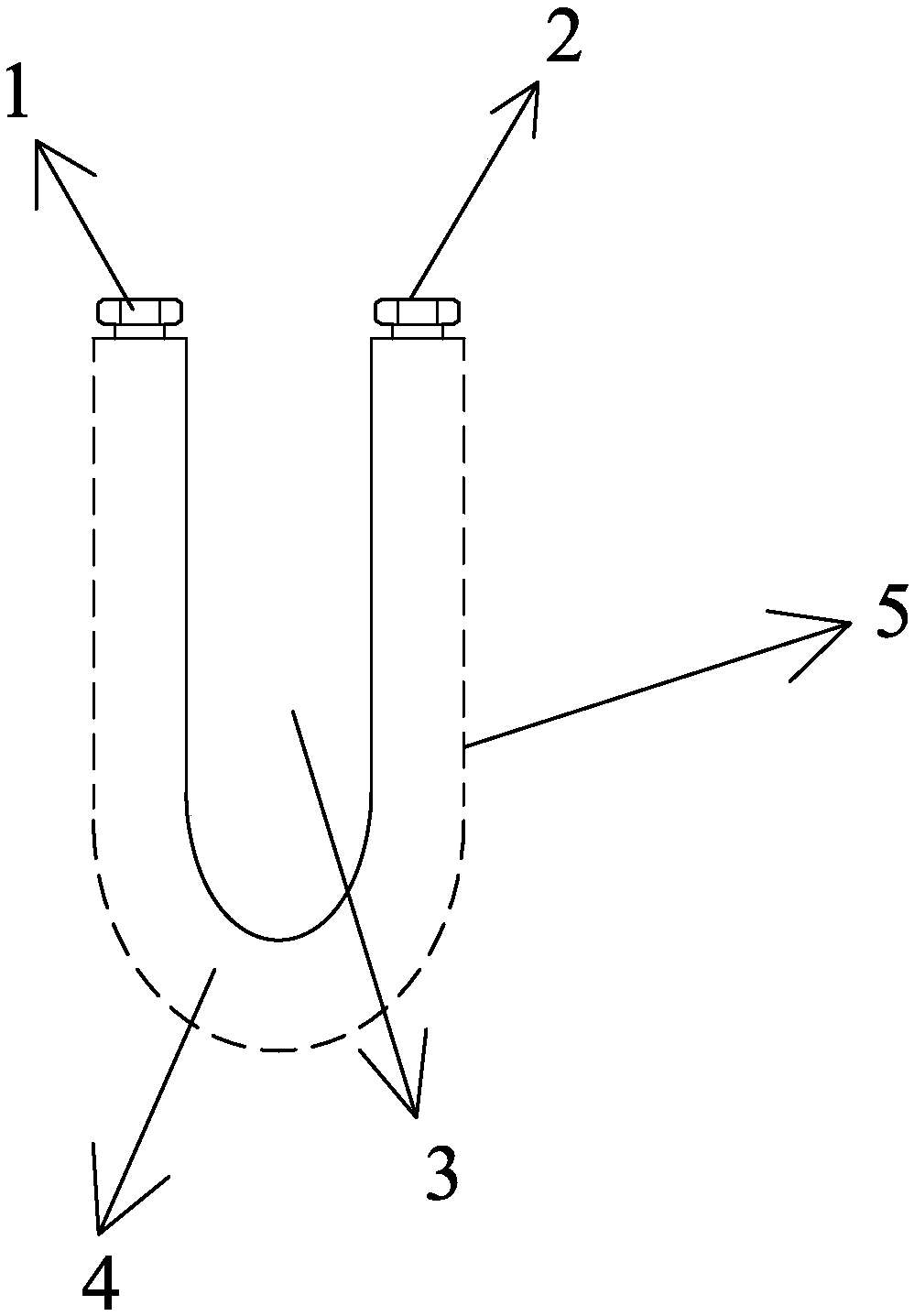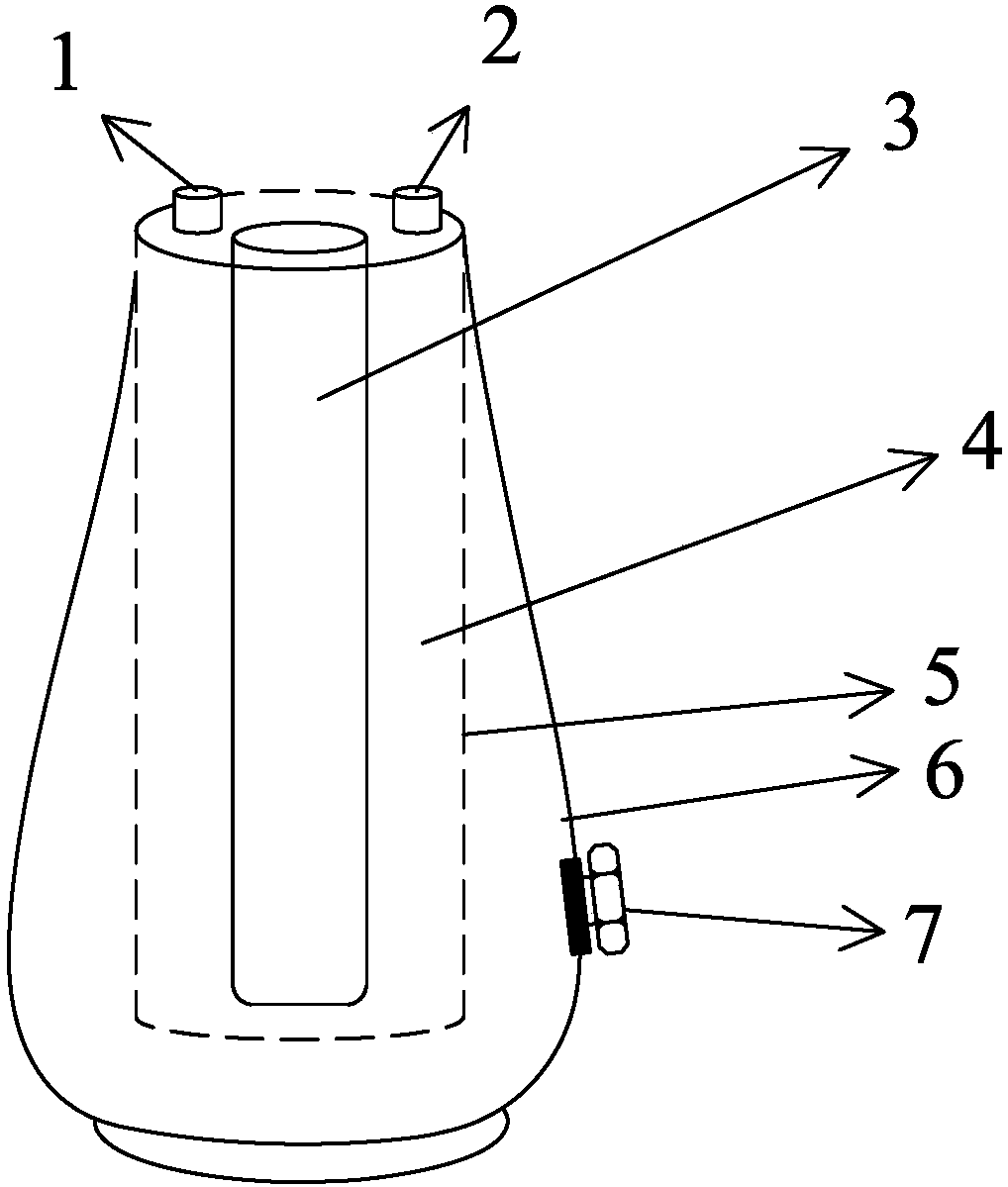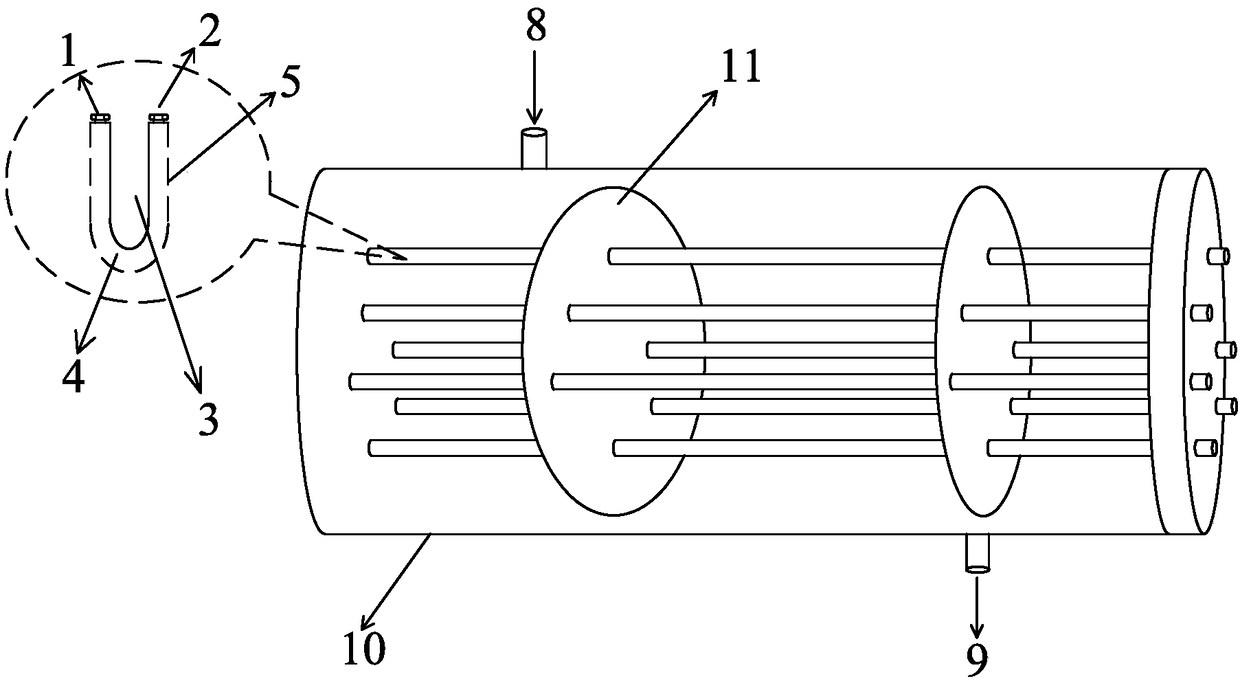Device and method to degrade polycyclic aromatic hydrocarbon pollutants
A technology for polycyclic aromatic hydrocarbons and pollutants, which is applied in the field of devices and methods for degrading polycyclic aromatic hydrocarbon pollutants, can solve problems such as the threat of drinking water sources, PAHs are difficult to degrade, and the impact of environmental factors is large, and achieve important social and ecological benefits, The source of raw materials is wide and low, and the effect is suitable for popularization
- Summary
- Abstract
- Description
- Claims
- Application Information
AI Technical Summary
Problems solved by technology
Method used
Image
Examples
Embodiment 1
[0032] (1) Pretreatment of oyster shells
[0033] Oyster shells are mixed with a lot of silt and other sundries, they should be cleaned carefully to remove the soil and skin stains attached to the surface, and then dried or dried directly after cleaning. The process flow is as follows:
[0034] Oyster shell→picking→soaking→cleaning→pickling→rinsing→drying→coarse powder→sieving→calcining.
[0035] Soaking: Soak in tap water for 4 hours, stirring constantly for washing.
[0036] Pickling: Put the cleaned oyster shells in 0.5% hydrochloric acid, stir constantly for pickling, and take them out after 1 hour.
[0037] Rinse: Soak and rinse with distilled water to make it neutral.
[0038] Calcination: The sieved oyster shell powder is calcined at high temperature for 1 hour for use.
[0039] (2) Preparation of titanium oxide sol
[0040] Solution A: 20 mL of tetrabutyl titanate was added into 50 mL of absolute ethanol under vigorous stirring, and the stirring was continued for ...
Embodiment 2
[0048] see figure 1 The structure of the polycyclic aromatic hydrocarbon pollutant degradation device of the present invention is as follows: it includes a hollow quartz tube, the outer tube wall of the hollow quartz tube is hollowed out, and hollow holes 5 are provided. The left end of the hollow quartz tube is provided with an inlet 1, and the right end is provided with an outlet 2, and the hollow quartz tube is filled with oyster shell powder 4 loaded with titanium dioxide. An ultraviolet light source 3 is arranged between the hollow tubes.
[0049] see figure 2 , is a static device: this device is suitable for situations where there are few pollutants to be treated
[0050] A stainless steel container 6 is placed on the outside of the device, the middle and lower side of the container 6 is provided with a solution outlet 7, and a cylindrical hollow quartz device is arranged in the middle of the container 6. The outer layer of the quartz device is hollowed out, and hollo...
Embodiment 3
[0052] Dynamic device: This device is suitable for batch treatment of pollutants
[0053] see figure 1 The structure of the polycyclic aromatic hydrocarbon pollutant degradation device of the present invention is as follows: it includes a hollow quartz tube, the outer tube wall of the hollow quartz tube is hollowed out, and hollow holes 5 are provided. The left end of the hollow quartz tube is provided with an inlet 1, and the right end is provided with an outlet 2, and the hollow quartz tube is filled with oyster shell powder 4 loaded with titanium dioxide. An ultraviolet light source 3 is arranged between the hollow tubes.
[0054] see image 3 , the device includes a flat cylindrical stainless steel container 10, the upper side of the stainless steel container 10 is provided with a water inlet pipe 8 and a water outlet pipe 9 on the lower side, which is beneficial to the inflow and discharge of pollutants, and the stainless steel container 10 is provided with two vertical...
PUM
 Login to View More
Login to View More Abstract
Description
Claims
Application Information
 Login to View More
Login to View More - R&D
- Intellectual Property
- Life Sciences
- Materials
- Tech Scout
- Unparalleled Data Quality
- Higher Quality Content
- 60% Fewer Hallucinations
Browse by: Latest US Patents, China's latest patents, Technical Efficacy Thesaurus, Application Domain, Technology Topic, Popular Technical Reports.
© 2025 PatSnap. All rights reserved.Legal|Privacy policy|Modern Slavery Act Transparency Statement|Sitemap|About US| Contact US: help@patsnap.com



